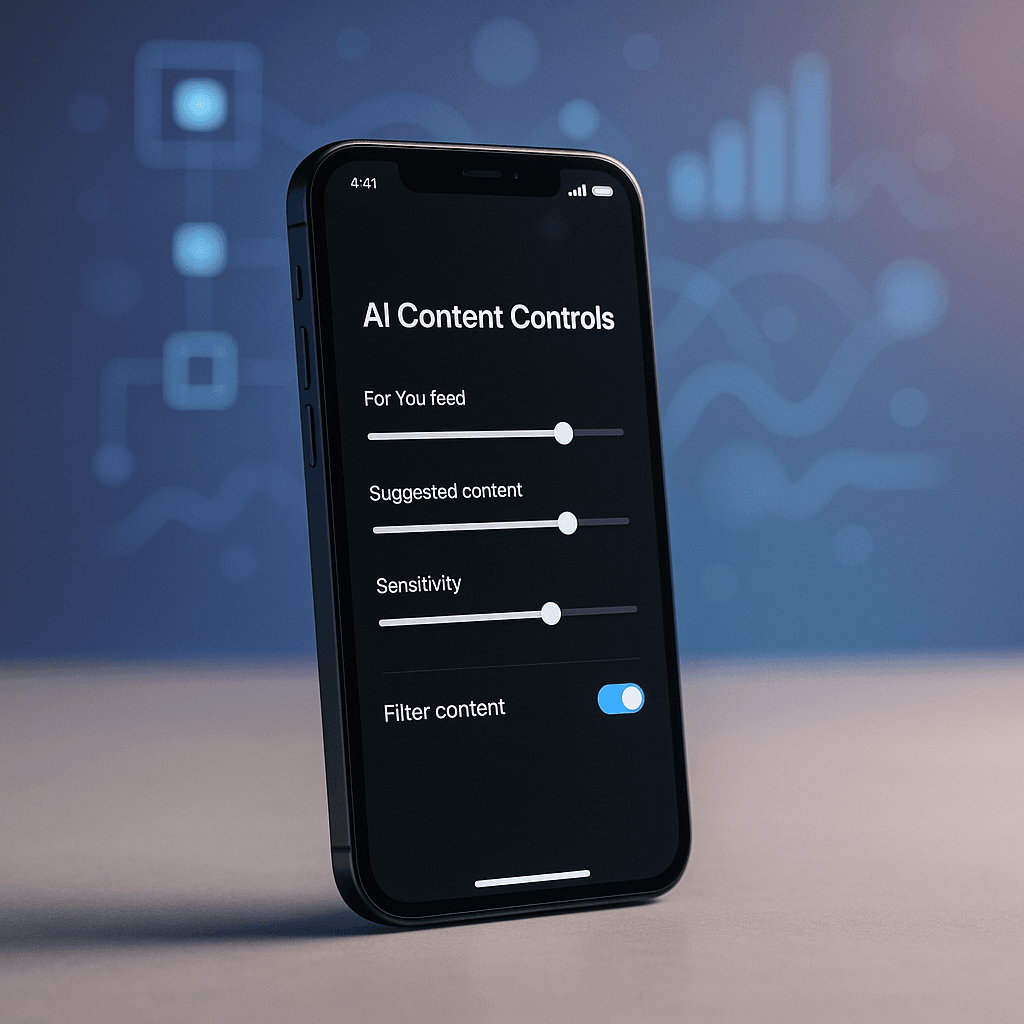TikTok just rolled out a game-changing feature that puts users in control of their AI content experience. The platform's new AI-generated content control lets users dial up or down the amount of AI videos in their For You feed, while invisible watermarking technology aims to better identify synthetic content across the platform.
TikTok's latest update signals a major shift in how social platforms handle the growing flood of AI-generated content. The company's new AI-generated content (AIGC) control sits within its existing "Manage Topics" tool, giving users unprecedented control over their algorithmic experience. Users who find AI content tiresome can reduce it, while those fascinated by synthetic videos can see more of them flowing through their feeds.
The timing isn't coincidental. Since Meta launched Vibes in September - a dedicated feed for AI-generated short videos - and OpenAI followed with its Sora platform days later, AI content has exploded across social media. "Like those controls, the AIGC setting is intended to help people tailor the diverse range of content in their feed, rather than removing or replacing content in feeds entirely," TikTok explained in its announcement.
The feature addresses a real problem users face daily. Realistic AI-generated videos now regularly appear on TikTok, from historical recreations to celebrity content that can be hard to distinguish from authentic footage. Many creators are leveraging AI tools to enhance their content about everything from ancient history to current events, blurring the lines between human creativity and machine generation.
Accessing the new controls is straightforward - users navigate to Settings, then Content Preferences, and select Manage Topics. A simple slider lets them adjust AI content exposure across the spectrum from "show me less" to "bring on more." The feature rolls out over the coming weeks, according to TikTok's announcement.
But TikTok isn't stopping at user controls. The platform is testing "invisible watermarking" technology that embeds detection markers only TikTok can read. This addresses a critical weakness in current AI labeling systems - when content gets reuploaded or edited on other platforms, existing labels often disappear.
TikTok already requires creators to label realistic AI-generated content and uses Content Credentials from the Coalition for Content Provenance and Authenticity (C2PA), which embeds metadata into files. But these industry-standard markers can be stripped away during content sharing. The invisible watermarks create a more permanent identification system.












